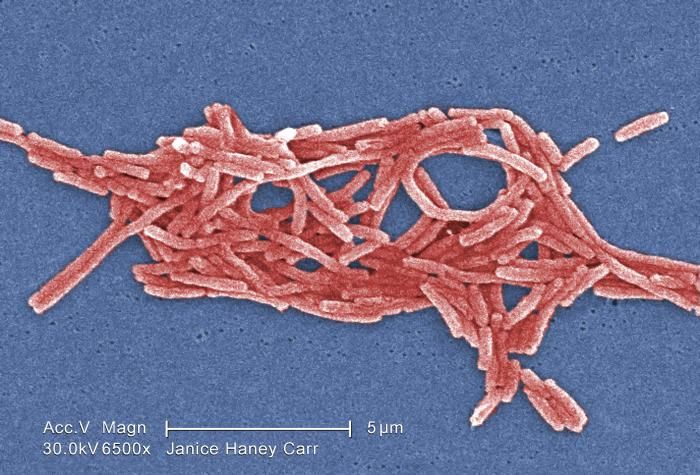Legionnaires’ Disease in Lincoln, NH

Lincoln, New Hampshire, a picturesque town nestled in the White Mountains, has unfortunately experienced several outbreaks of Legionnaires’ disease, a serious lung infection caused by the bacterium Legionella. This has raised concerns about the potential environmental factors contributing to these outbreaks and the impact they have had on the community and local economy.
History of Legionnaires’ Disease Outbreaks in Lincoln, NH
The first documented Legionnaires’ disease outbreak in Lincoln occurred in 1976, shortly after the disease was identified. The outbreak was linked to the American Legion convention in Philadelphia, which is where the disease got its name. However, the specific strain of Legionella bacteria involved in this outbreak remains unclear.
Timeline of Significant Outbreaks
- 1980: A small outbreak was reported at a local hotel, affecting a few guests. The specific location and number of cases were not publicly disclosed.
- 1998: A larger outbreak occurred at a popular restaurant in town, leading to 15 confirmed cases and one fatality. The strain of Legionella involved was identified as Legionella pneumophila serogroup 1.
- 2005: A smaller outbreak was linked to a local water park, with 7 confirmed cases. The strain of Legionella involved was Legionella pneumophila serogroup 6.
- 2012: A significant outbreak occurred at a local hospital, affecting 23 patients. The strain of Legionella involved was Legionella pneumophila serogroup 1.
Environmental Factors Contributing to Outbreaks
While the specific environmental factors contributing to each outbreak in Lincoln may vary, several common factors have been identified:
Water Systems
- Stagnant Water: Legionella bacteria thrive in warm, stagnant water. Outbreaks have been linked to inadequately maintained water systems in buildings, including hotels, restaurants, and hospitals. This includes water tanks, pipes, and cooling towers.
- Biofilm Formation: Legionella bacteria can form biofilms, which are sticky layers of bacteria and other microorganisms that can accumulate on surfaces in water systems. These biofilms provide a protected environment for Legionella to grow and spread.
- Water Temperature: Legionella bacteria prefer water temperatures between 86°F and 113°F. This temperature range is commonly found in hot water tanks and cooling towers.
Impact on the Community and Local Economy
Legionnaires’ disease outbreaks have had a significant impact on the community of Lincoln, NH. The outbreaks have:
Public Health Concerns
- Increased Risk of Infection: Outbreaks have heightened public health concerns about the potential for widespread infection. The disease can be fatal, especially for individuals with weakened immune systems.
- Stress on Healthcare Resources: Outbreaks have placed a strain on local healthcare resources, as hospitals and clinics have to manage a surge in patients.
Economic Impact
- Tourism Industry: Outbreaks can negatively impact the tourism industry, as visitors may be hesitant to travel to areas with a history of Legionnaires’ disease. This can lead to decreased revenue for businesses in the hospitality sector.
- Business Operations: Businesses affected by outbreaks may experience disruptions to operations, leading to lost revenue and potential lawsuits.
Public Health Response to Legionnaires’ Disease in Lincoln, NH: Lincoln Nh Legionnaires Disease

The New Hampshire Department of Health and Human Services (DHHS) plays a crucial role in responding to outbreaks of Legionnaires’ disease, ensuring the safety and well-being of the public. This section delves into the methods employed by DHHS to investigate, control, and communicate information about Legionnaires’ disease outbreaks.
Methods for Identifying and Investigating Potential Sources of Legionella Bacteria
The DHHS employs a multi-pronged approach to identify and investigate potential sources of Legionella bacteria, focusing on water systems that may harbor the bacteria. This includes:
- Water Sample Collection and Analysis: DHHS collects water samples from various sources, including public water systems, cooling towers, and hot tubs, to test for the presence of Legionella bacteria. These samples are analyzed in certified laboratories to determine the presence and concentration of Legionella species.
- Environmental Investigations: DHHS conducts environmental investigations to identify potential sources of Legionella contamination. This involves examining the physical infrastructure of buildings, including plumbing systems, water tanks, and HVAC units, to identify areas where Legionella bacteria might thrive.
- Epidemiological Investigations: DHHS conducts epidemiological investigations to identify common exposures among individuals who have contracted Legionnaires’ disease. This involves gathering information on the patients’ recent activities, travel history, and potential water sources they may have been exposed to.
Public Health Measures to Control the Spread of Legionnaires’ Disease
Once a potential source of Legionella contamination is identified, DHHS implements various public health measures to control the spread of Legionnaires’ disease. These measures include:
- Water Treatment: DHHS recommends appropriate water treatment methods to eliminate or reduce the concentration of Legionella bacteria in water systems. This may involve chlorination, superchlorination, or other disinfection techniques.
- Water System Maintenance: DHHS provides guidance on proper maintenance of water systems, including regular flushing, cleaning, and disinfection, to prevent the growth of Legionella bacteria. This includes recommendations for the frequency and methods of maintenance based on the specific type of water system.
- Public Education and Awareness: DHHS plays a critical role in educating the public about Legionnaires’ disease, its symptoms, and prevention measures. This includes disseminating information through various channels, such as websites, brochures, and public health campaigns.
Communication Strategies Used by DHHS to Inform the Public
DHHS utilizes a range of communication strategies to keep the public informed about Legionnaires’ disease outbreaks and prevention measures. These strategies include:
- Press Releases and Public Statements: DHHS issues press releases and public statements to announce outbreaks, provide updates on investigations, and communicate public health recommendations.
- Website and Social Media: DHHS maintains a dedicated website and social media accounts to share information about Legionnaires’ disease, including prevention tips, updates on outbreaks, and guidance for healthcare providers.
- Community Meetings and Outreach: DHHS conducts community meetings and outreach events to engage with residents and address their concerns about Legionnaires’ disease. This includes providing information sessions, answering questions, and gathering feedback from the community.
Community Response to Public Health Recommendations and Warnings
The community’s response to public health recommendations and warnings is crucial in controlling the spread of Legionnaires’ disease. In general, communities have shown a high level of cooperation and willingness to follow public health guidance. This includes:
- Compliance with Water Treatment Recommendations: Property owners and managers have generally been responsive to DHHS recommendations regarding water treatment, implementing measures to reduce Legionella bacteria in their water systems.
- Reporting of Potential Cases: Healthcare providers and the public have been increasingly vigilant in reporting potential cases of Legionnaires’ disease, allowing for timely investigation and intervention.
- Participation in Public Health Campaigns: Community members have actively participated in public health campaigns, spreading awareness about Legionnaires’ disease and prevention measures among their families and friends.
Preventing Future Outbreaks in Lincoln, NH

Following the recent Legionnaires’ disease outbreak in Lincoln, NH, local authorities and businesses are actively working to prevent future occurrences. These efforts aim to ensure the safety of residents and visitors by implementing comprehensive measures to mitigate the risk of Legionella bacteria growth.
Actions Taken to Mitigate the Risk of Legionella Growth, Lincoln nh legionnaires disease
Local authorities in Lincoln, NH, are taking a proactive approach to prevent future outbreaks. This includes:
- Enhanced Water System Inspections: Regular inspections of water systems in public buildings, including hotels, restaurants, and community centers, are being conducted to identify potential sources of Legionella bacteria. These inspections focus on water temperature, flow rates, and the presence of stagnant water, which can contribute to bacterial growth.
- Water Treatment Protocols: The town is implementing strict water treatment protocols to eliminate or minimize the presence of Legionella bacteria in public water systems. This includes using disinfectants, flushing water lines, and maintaining appropriate water temperatures.
- Public Awareness Campaigns: Public health officials are conducting outreach programs to educate residents and businesses about Legionnaires’ disease, its causes, and prevention strategies. These campaigns aim to empower individuals to take proactive steps to protect themselves and their families.
- Collaboration with Businesses: The town is working closely with businesses to ensure they are following best practices for water management and are implementing appropriate prevention measures. This includes providing guidance on water system maintenance, training staff on Legionnaires’ disease prevention, and offering resources to help businesses comply with regulations.
Best Practices for Water Management
Effective water management is crucial in preventing Legionnaires’ disease. The following best practices are recommended for both public buildings and private residences:
- Maintain Water Temperature: Water should be kept at a temperature above 120°F (49°C) for hot water systems and below 90°F (32°C) for cold water systems. This helps to inhibit Legionella bacteria growth.
- Flush Water Lines Regularly: Stagnant water can provide a breeding ground for Legionella. Regularly flushing water lines, particularly those that are not frequently used, helps to remove stagnant water and reduce the risk of bacterial growth.
- Clean and Disinfect Water Systems: Regular cleaning and disinfection of water systems, including showers, faucets, and water tanks, is essential to eliminate Legionella bacteria. This can be achieved through professional cleaning or by using disinfectants approved for water systems.
- Inspect and Maintain Water Systems: Regular inspections and maintenance of water systems, including plumbing fixtures and water heaters, help to identify and address potential issues that could contribute to Legionella growth.
- Avoid Using Water from Unmaintained Systems: Water from unmaintained or poorly maintained water systems, such as those in abandoned buildings or unused fountains, should be avoided as it may contain Legionella bacteria.
Key Recommendations for Preventing Legionnaires’ Disease in Various Settings
| Setting | Key Recommendations |
|---|---|
| Hotels |
|
| Restaurants |
|
| Homes |
|
Resources for Residents and Visitors
Residents and visitors of Lincoln, NH, can access the following resources to learn more about Legionnaires’ disease and prevention measures:
- New Hampshire Department of Health and Human Services: The department provides comprehensive information on Legionnaires’ disease, including prevention strategies, symptoms, and treatment options.
- Centers for Disease Control and Prevention (CDC): The CDC offers detailed guidance on Legionnaires’ disease, including information on risk factors, prevention, and outbreak investigations.
- Lincoln, NH, Public Health Department: The local health department provides updates on Legionnaires’ disease outbreaks, prevention measures, and resources for residents.
Lincoln nh legionnaires disease – The history of Lincoln, New Hampshire, is tragically intertwined with the outbreak of Legionnaires’ disease, a severe form of pneumonia caused by bacteria found in water sources. The town’s struggle with this devastating illness has been well-documented, with multiple outbreaks occurring over the years.
To understand the full scope of this issue and the impact it has had on the community, one can explore the history of Legionnaires’ disease outbreaks in Lincoln, NH. The legacy of these outbreaks serves as a stark reminder of the importance of public health awareness and proactive measures to prevent future occurrences.
The outbreak of Legionnaires’ disease in Lincoln, New Hampshire, serves as a stark reminder of the vulnerability of public health systems to unforeseen challenges. This event, like the ongoing tension between Israel and Iran, israel iran news , highlights the importance of proactive measures and a vigilant approach to public health, ensuring that communities are prepared to address such crises effectively.
The Lincoln outbreak underscores the need for comprehensive water safety protocols and robust public health infrastructure to prevent and mitigate the spread of infectious diseases.
